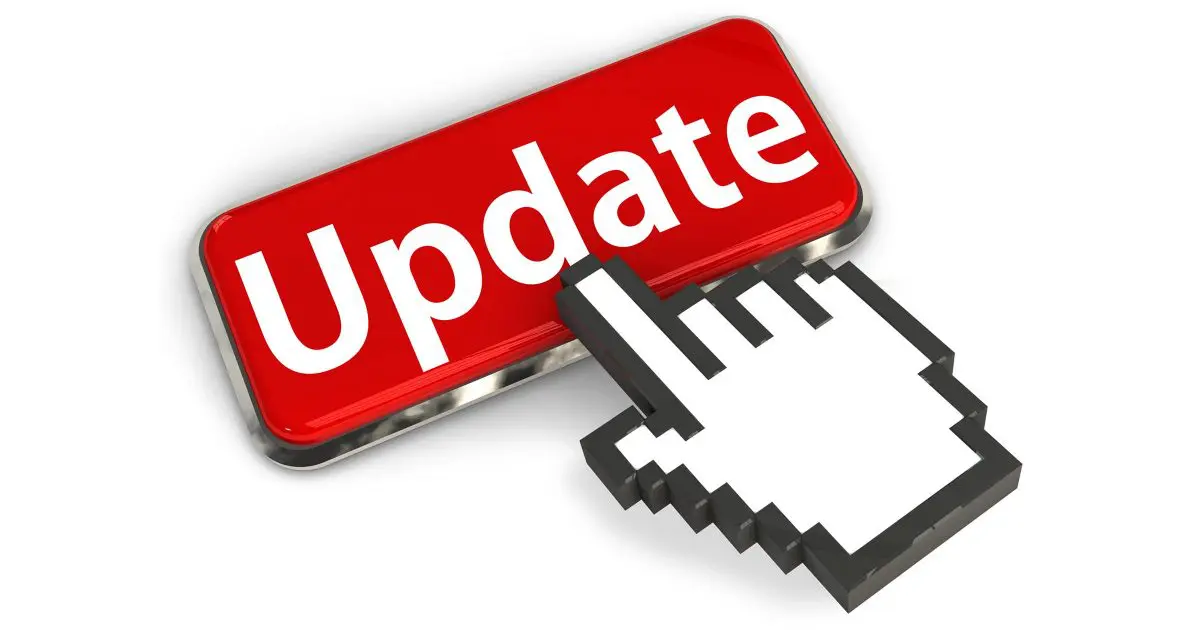Generally, yes, but sometimes the cost is much higher than you bargained for

No.
But there are scenarios where there may be. There are also scenarios where the cost is significantly higher than you might imagine.

Legitimate update notices are generally free to install. Some are notifications of a new version, which may require payment. So-called “scareware” tries to scare you into action, and you should never pay. By far the most important to be clear on is Windows itself: learn to recognize its update messages; it’s free.
Legitimate pop-ups: generally free
Windows (and many of the applications installed on your machine) displays a pop-up to notify you when updates are ready.
From the wording you’ve used, I assume you’re seeing a pop-up from Windows itself. “Updates are ready for your computer” is typical Windows Update wording.
Updates to Windows are free. Period. Doesn’t matter if it’s a minor security update or a more major “feature update”; for any installed and activated copy of Windows, these updates are free.
They’re also important. I recommend you take them.
Some legitimate pop-ups: maybe not
Other applications often use similar techniques to notify you of available updates. They may indicate that the updates are available to download, or have already been downloaded and are ready to install.
Most application updates are free. Like Windows updates, they’re generally important, and I recommend you take them.
Some application updates are not free. This varies dramatically based on the application itself, but options include:
- Free updates for some time, after which you need to purchase a license for a fee.
- Minor updates are free, but major updates (such as to new versions) require payment.
- Something else.
Again, most applications make it clear which scenario you’re facing. You may need to click on the update notice to get the information that will tell you.
Scareware: definitely not
There’s a particularly annoying form of malware referred to as “scareware”. As its name implies, it tries to scare you into taking action — action that is typically completely unnecessary.
Action that, at best, often costs you money. At worst, it loads your machine with more malware.
Telling the difference
Help keep it going by becoming a Patron.
It’s a bit of a chicken-and-egg problem, but the most important thing is to learn to recognize the Windows Update message. If you’re unsure, you can search for an image — using its exact wording — online.
The same is true for applications. Though you probably won’t see the messages often, if you do you’ll begin to recognize them when they appear.1
On the other hand, if you get a pop-up message that seems overly insistent or downright threatening — particularly if it’s asking you to call a phone number — that’s a sign that you’re not dealing with a legitimate update. DO NOT follow the pop-up’s instructions.
And if the popup, or the information that results, starts talking about requiring payment, stop. It might be legitimate, as I mentioned above, but it may also be a scam. Take the time to research its claims prior to proceeding.
Paying the ultimate price
It’s worth being careful when you’re presented with popups or webpages that encourage you to take updates. Many are both legitimate and important.
Others, however, are anything but, and may involve paying the ultimate price: that of a technician to help clean up whatever it is they’ve done to your computer.
Do this
Subscribe to Confident Computing! Less frustration and more confidence, solutions, answers, and tips in your inbox every week.
I'll see you there!
Podcast audio
Footnotes & References
1: Note that some applications will tell you “there’s a new version” as a way to get you to update to a paid product from a free edition or free trial. Those, of course, are not free updates.


I used to use AVG. They would pop up a message talking about an update and that I should click their message.
Problem was, I was never certain it was AVG. Even if I went to their website, it wasn’t always clear there was a new version because I guess they liked to give advance notice of new versions to existing users before the general public.
If you have to question your security software, maybe its time for new security software. I don’t use AVG any more.
“Again, most applications make it clear which scenario you’re facing.”
I’ve found more than a few freeware versions of programs make it not so clear (read deceptive) to push users into getting the paid version. When an update is available, they provide an “Upgrade” button and a “No Thanks” text link. The Upgrade button sends you to the page to get the paid for upgrade and the No thanks link sends you to a page with a comparison table where you can choose whether to get the updated free version and one or a few upgrade versions.